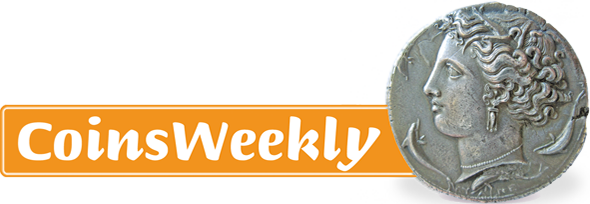Big price for an emergency coin
The city of Syracuse issued a marvelous gold coin during its war against the Carthaginians. A perfect specimen of this emission sold for 66.700 Euro during the last auction sale of Gorny & Mosch…
The city of Syracuse issued a marvelous gold coin during its war against the Carthaginians. A perfect specimen of this emission sold for 66.700 Euro during the last auction sale of Gorny & Mosch…
Ten Rhodians, ten ships, says an ancient proverb. It tells of the source of the riches of this island, which had one of the most important harbors of the ancient world. It was protected by the Colossus of Rhodes, a statue of Helios, who is also depicted on Rhodian coins.
Aristotle, in his work on the structure of the Tarentine government, likewise described the coins of the city. He remarked that they depicted Taras, son of Poseidon, riding a dolphin. Was he right? Or is there another, more possible, option?
For an impressive amount of money some extraordinary Greek coins were auctioned at Gorny & Mosch’s, Giessener Münzhandlung on October 10. One of them is a remarkable tetradrachm from Syracuse whose story you will read here…
Beyond his name, there’s very little known about Teutamados. What we do have, however, is a splendid tetradrachm minted for him. Based on this, he was evidently a Paionian ruler.
In 479 BC the Greeks defeated the Persians at Plataiai. At that time nobody dared to hope that the fight was so soon to end. On the contrary, every Greek city was afraid of the Persian king, who had vast resources at his disposal. He was feared to raise another army in order to conquer the whole of Greece. Something had to be done to prevent that.
Why is it that for centuries – or rather thousands of years – the head has served as the motif for the side of a coin? And why has this changed in the last 200 years? Ursula Kampmann poses these questions in her book ‘MenschenGesichter,’ from which the texts for our new series are taken.
Why is it that for centuries – or rather thousands of years – the head has served as the motif for the side of a coin? And why has this changed in the last 200 years? Ursula Kampmann poses these questions in her book ‘MenschenGesichter,’ from which the texts for our new series are taken.
Coffee or champagne? Apollo or Dionysus? During the 19th century, Dionysus was depicted as the god of rapture, the embodiment of our subconscious. But how did the Greeks see their god? We will delve into this question by analyzing several of the coins sold in the upcoming 335th Hess Divo AG Auction, which will take place on December 6, 2018.
Most of us react uncomprehendingly while reading the Greek myths. We can’t imagine that once rational human beings were able to believe in gods who behaved like characters invented for a soap opera on TV. Legends tell us about adultery, violation, theft, intrigue and fraud.
We are the bridge connecting the international numismatic world. Our readers include collectors, professional coin dealers and researchers, as well as all those involved in coin production. We are read in 170 countries! We provide you with information on everything you want to know about the subject of money – from antiquity to the present day. And much more...
Follow us
You need to load content from reCAPTCHA to submit the form. Please note that doing so will share data with third-party providers.
More InformationYou are currently viewing a placeholder content from Facebook. To access the actual content, click the button below. Please note that doing so will share data with third-party providers.
More InformationYou are currently viewing a placeholder content from Instagram. To access the actual content, click the button below. Please note that doing so will share data with third-party providers.
More InformationYou are currently viewing a placeholder content from X. To access the actual content, click the button below. Please note that doing so will share data with third-party providers.
More Information